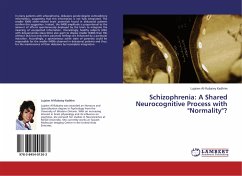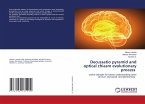In many patients with schizophrenia, delusions persist despite contradictory information, suggesting that this information is not fully integrated. The smaller N400 event-related brain potentials found in delusional patients confirm this suggestion. Indeed, the N400 amplitude is proportional to the amount of efforts spontaneously deployed by the brain to integrate the meaning of unexpected information. Interestingly, healthy subjects (HSs) with delusional-like ideas (DLIs) also seem to display smaller N400s than HSs without DLIs but only when paranoid feelings are enhanced by a particular induction. Accordingly, a spontaneous active state of paranoia could be responsible for the smaller N400s observed in delusional patients and thus, for the maintenance of their delusions by incomplete integration.
Bitte wählen Sie Ihr Anliegen aus.
Rechnungen
Retourenschein anfordern
Bestellstatus
Storno








